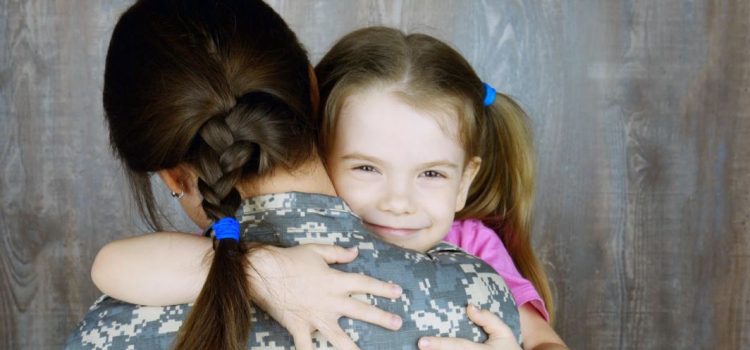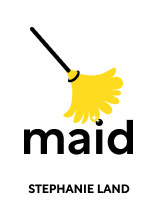

This article is an excerpt from the Shortform book guide to "Maid" by Stephanie Land. Shortform has the world's best summaries and analyses of books you should be reading.
Like this article? Sign up for a free trial here .
What are the main themes in Stephanie Land’s book Maid? What is Maid about?
Maid is Stephanie Land’s New York Times bestselling memoir of her life as a single mom struggling to make ends meet. The book features themes of abuse, flawed government policies, poverty, and more.
Read on to learn the six themes of Maid by Stephanie Land.
Maid Book: Stephanie Land’s Story
In her book Maid, Stephanie Land puts forth her own life as an example of how circumstances beyond a person’s control can force them into poverty and keep them there. She demonstrates how factors such as domestic abuse, lack of a support system, a weak labor market, and flawed government policies make it extremely difficult for her to lift herself out of poverty, no matter how hard she works. Maid is not so much a story of overcoming poverty as it is of surviving it. Land is, however, able to improve her circumstances.
(Shortform note: Following the events on which the book is based, Land went on to become a freelance writer. She received early support from the Economic Hardship Reporting Project, a nonprofit founded by Barbara Ehrenreich (author of Nickel and Dimed, and who also wrote the forward to Maid). Land wrote a viral article for Vox about her experiences as a maid, leading to a book deal. Maid was adapted into a popular, critically acclaimed Netflix miniseries, finally bringing Land the financial stability she worked so many years to achieve.)
The book moves back and forth in time, beginning with Land and her daughter’s life in a homeless shelter, then jumping backward to show how they ended up there. This pattern repeats throughout. Overall, it shows Land’s relationship with her parents, her abusive boyfriend Jamie, and how she worked as a housekeeper to support herself and her daughter.
Key Themes—Circumstances That Contribute to Land’s Poverty
Beyond being a story of Land’s life, Maid is a broader social commentary on the American “pull yourself up by your bootstraps” mentality. Land demonstrates that American stereotypes about the poor—that they are lazy, they are freeloaders, that their situation is the result of bad choices—aren’t only untrue and demeaning, but they also ignore overarching causes of poverty that go beyond questions of personal responsibility.
Land puts forth her own life as an example of how systemic problems and circumstances beyond a person’s control can force them into poverty and keep them there. She shows how abuse, single motherhood, a weak labor market, the lack of an education or a support system, flawed government policies, and the cyclical nature of poverty all contribute to and compound poverty, making it extremely difficult for her to pull herself out no matter how hard she works.
Abuse
Jamie’s emotional, psychological, and verbal abuse of Land precipitates her descent into poverty. Land is forced to leave the home she shares with Jamie because she no longer feels safe. With nowhere else to go, she ends up in a homeless shelter.
Not only does the abuse cause Land to lose her home, it almost causes her to lose Mia. Jamie fights Land for custody of Mia, claiming that Land is mentally unstable and an unfit mother.
Even years after Land wins custody, Jamie continues to verbally abuse her and have angry outbursts about having to pay child support or take care of Mia. He also manipulates Mia into believing it’s Land’s fault that Mia doesn’t see him more. The constant conflict with Jamie takes a psychological toll on Land and her daughter. It also means Land has to shoulder a heavier load as a single parent.
Single Motherhood
Although Land’s relationship with Jamie was untenable, it did provide some financial stability. When Land lived with Jamie before getting pregnant, they were able to combine their incomes and save money on rent. After Land gave birth, she could stay home with Mia while Jamie continued to work.
Once Land and Jamie split up, however, Land is on her own. She receives a minimal amount of child support from Jamie, but she’s essentially the sole breadwinner for herself and her daughter, as well as the person responsible for Mia’s care and for obtaining any government assistance that will help them survive. This makes it harder to hold onto a working-class existence.
Lack of Education
In addition to an overall lack of opportunity, Land has only a high school education, which further limits the jobs available to her. She believes that obtaining a college degree will be her only way out of poverty. To achieve that goal, she takes online classes to earn a two-year degree at a community college.
In order to get an education while simultaneously working and caring for Mia, Land often stays up until one or two in the morning finishing her homework. She also receives financial aid for low-income students. Her story illustrates how hard it can be for a member of the working poor to get an education.
Lack of Support System
Another factor contributing to Land’s poverty is her lack of a support system. Her fraught relationship with her parents, as well as her parents’ own financial instability, means she has no one to bail her out in emergencies. Not only are her parents unable to provide monetary support, but they also are unequipped to provide psychological support, as they are too wrapped up in their own lives.
Land has also lost touch with most of her friends because she is embarrassed about her poverty, and she doesn’t want them to know how much government assistance she receives. When Land does confide in a friend, the friend remarks that her tax dollars are paying for all the government assistance Land is receiving.
Flawed Government Policies
Throughout her book Maid, Land illustrates how government policies feed into degrading stereotypes about the poor, while also making it extremely difficult for them to pull themselves out of poverty. Maid touches on the inadequacy of government aid, how government policies make degrading assumptions about the poor, and how government programs discourage upward mobility.
Cyclical Nature of Poverty
The last and most important theme to take away from Stephanie Land’s Maid is the cycle of poverty. Besides the multiple independent factors that force Land into poverty and keep her there, Land has to contend with the cyclical way in which these factors interact with each other to exacerbate her poverty. Land and her daughter’s living conditions make Mia sick, which results in Land missing work. Complying with requirements for government aid also causes Land to miss work. And because Land and her daughter are barely surviving, any unforeseen expense or circumstance puts them at risk of homelessness.

———End of Preview———
Like what you just read? Read the rest of the world's best book summary and analysis of Stephanie Land's "Maid" at Shortform .
Here's what you'll find in our full Maid summary :
- The true story of a single mother who struggled to make ends meet as a housekeeper
- A social commentary on the American “pull yourself up by your bootstraps” mentality
- Background information, research, and statistics on the key themes in the memoir






